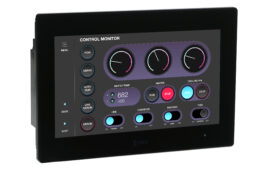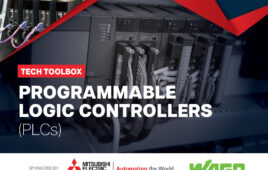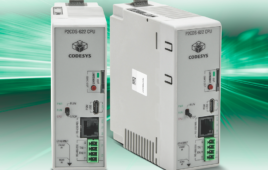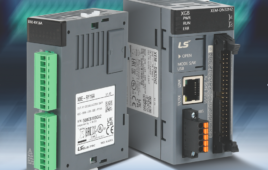Industrial automation typically uses 24 Vdc, but many mobile and remote applications are easier to integrate with 12 Vdc PLCs.
By Don Pham, IDEC Corporation
Typical industrial automation projects today rely heavily on 24 Vdc for device power and signaling. This voltage level is touch-safe for users and the minimal voltage drop in conductors due to the currents involved at these relatively low voltage levels is acceptable. However, there are several reasons to consider using 12 Vdc as nominal design voltage for many applications.
For example, 12 Vdc is a common voltage for individual batteries and battery banks. Automation of traffic controls, water wells, and other remote equipment is often powered by solar charging systems in conjunction with battery powered storage systems.
Heavy equipment and portable systems driven by internal combustion engines usually have 12 Vdc readily available. Even some oil and gas pumping stations, gas wells, small compressors, and separator/regulator systems using utility power may rely on battery backups in the event of a power failure.
With the wide availability of lower level of power, it makes sense to use compatible programmable logic controllers (PLCs) in many instances.
Hardwired to smart relays to PLCs
Hardwiring 12 Vdc automation with relays, solenoids, and switches has always been common for simple applications. If additional functionality was required, sometimes a smart digital relay could suffice for discrete input/output (I/O) tasks.
However, if any degree of control complexity is involved, a PLC is usually the best choice. This is especially the case if any analog I/O are involved, such as receiving a signal from a pressure transmitter, or controlling a modulating valve.
Some PLCs can be powered using a range of 12 to 24 Vdc, but there are more details to consider beyond the nominal operating voltage, and the price, when choosing 12 Vdc PLC solutions.
Checking all the boxes
When choosing a PLC for a 12 Vdc application, designers need to ensure the device can withstand the environment, provide sufficient I/O, and support the necessary communication and visualization requirements (Figure 1). Following are some of the capabilities designers should investigate.
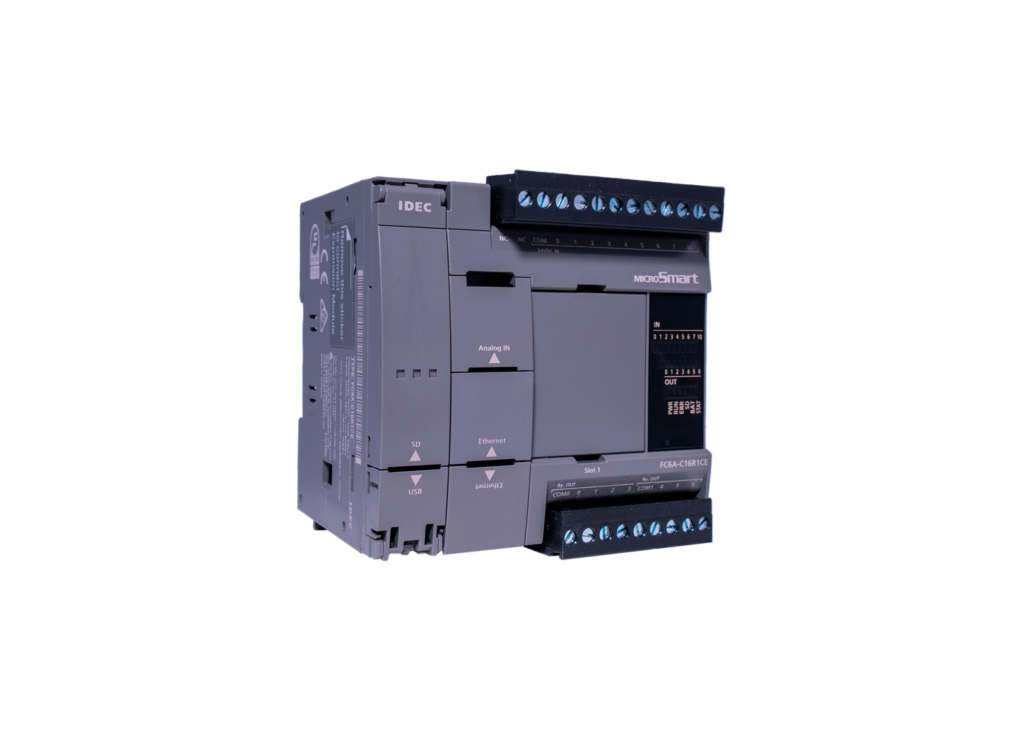
Some PLCs, like the IDEC FC6A MicroSmart family, can be powered and perform I/O signaling using 12 Vdc, which is suitable for solar/battery equipment, remote installations without utility power, and portable/mobile systems.
Most lower voltage PLCs will already have a relatively small form factor, which is a plus for remote and mobile applications where space is often at a premium. But these installations also tend to be located in environments that can become extremely hot or cold, or where high vibration is present. Selecting a device with the widest possible operating temperature range is a must, along with proper resistance to shock and vibration.
For applications where combustible gases, vapors, or liquids may be present, designers should look for devices carrying a Class I Division 2 rating as an indication of suitability for hazardous locations. For oil and gas installations this is obviously important, but in actuality many types of automated equipment may be used in and around hazardous locations, for example many types of water treatment.
Defining the I/O count may seem straightforward, but a common issue for automation projects is the need for additional future I/O as requirements expand. This is why modular designs are preferred to provide options for configuring the PLC initially, while providing options for future growth.
Communication protocols enable a PLC to talk to intelligent field devices, to other PLCs, and to supervisory systems like human-machine interfaces. Most PLCs are Ethernet-capable now, and Modbus TCP is among the most common protocols. However, it is also helpful if the PLC can use serial Modbus RTU communications to access legacy devices.
One last look
A final concern when selecting a 12 Vdc PLC solution regards what operator visualization is needed. This is often a requirement, with needed functionality varying widely. In some, no visualization is needed once the PLC is programmed and commissioned. Sometimes a small local HMI module is sufficient to let users access important values. In other cases, a full-fledged local HMI display needs to be installed in an easily accessible area.
More advanced applications might need web-viewable visualization and connectivity. In these cases, choosing a PLC with web server capabilities allows it to host web pages, which can be accessed by any device capable of hosting a web browser, such as a laptop, smartphone, or tablet.
Some PLCs can even initiate emails for warning or reporting purposes, often a necessity for monitoring remote unmanned locations. If the PLC includes an SD memory slot, users can store data on the SD card and transmit it as needed.
One other capability can be a great advantage for mobile applications which may not need full-time visualization. Some PLCs can interact with iOS and Android mobile apps over Bluetooth. This means users can connect their mobile devices wirelessly, without opening any enclosures, when they are near an automated installation. These apps let users monitor the system, change parameters, or perform other control tasks, such as uploading and downloading programs or data. This can be an ideal way to provide essential visualization right when and where it is needed.
Applications everywhere
Because solar power generation performance has increased and prices have decreased, there are many applications which can be purely solar-powered. A typical installation can be powered solely from photovoltaic solar panels when the sun is shining, and by a battery bank in other conditions. The battery bank receives a trickle charge from the solar panels, and it can operate for years with little or no maintenance.
Using solar/battery technologies, many types of traffic controls such as speed indicators and crosswalk warning signs can be installed on a single pole without requiring any external power or other connections (Figure 2). This makes it very economical to install them wherever they are needed, even if other infrastructure is unavailable. Integrating 12 Vdc PLCs with these systems is a compact way to obtain the necessary functionality. In addition, these PLCs can be connected to nearby wireless networks for sending information to the cloud or for receiving remote instructions.
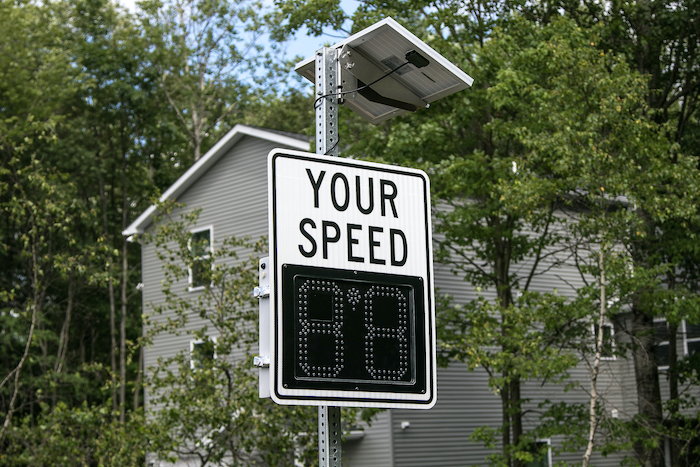
Traffic controls and signage can use solar/battery technologies and 12 Vdc PLCs, enabling installation anywhere.
Many types of equipment are built onto portable or towable platforms. These include manufacturing machines, chillers, air compressors, compressed natural gas trailers, and others. Each of these systems can be associated with an internal combustion engine or electrical vehicle power that is on-board or part of the towing system, and therefore able to supply 12 Vdc. Using a 12 Vdc PLC is the logical way to control the system devices, and to provide operating indication, safety warnings, alarms, and notifications.
Remotely located chemical injection systems may use solar/battery to run small pumps in addition to the controls, at least as a backup power means, if not the main source of power (Figure 3). Industrial-grade 12 Vdc PLCs built to withstand extremely high and low temperatures allow this equipment to be controlled and data-logged.

IDEC 12 Vdc PLCs are the robust choice for automating remotely located equipment where backup battery power is available, or on board mobile, portable, or towable equipment with an internal combustion engine that replenishes vehicle batteries.
12 Vdc PLCs support remote locations and mobile equipment
Per the preceding examples, 12 Vdc is a readily available normal or backup power source at many types of remote locations and on-board mobile equipment. Although 12 Vdc smart relays are an option, 12 Vdc PLCs are far more capable and a natural fit for performing any type of automation or communications tasks for these applications. These PLCs also provide an excellent price/performance ratio.
Today’s lower voltage PLCs include significant logic and communications functionality. Protocols are available for integrating these PLCs with intelligent field device and cloud-based IIoT systems. These PLCs come in convenient form factors, and modular configurations are available to support many types and quantities of I/O, both for the initial installation and for future expansion.
A final point is that these PLCs open the door for many types of visualization, whether directly on-board the PLC, via a local HMI, using a web-based interface, or using a mobile app. These visualization options make PLC-based systems easy to configure, operate, monitor, and maintain.
IDEC
us.idec.com
Filed Under: PLCs + PACs

